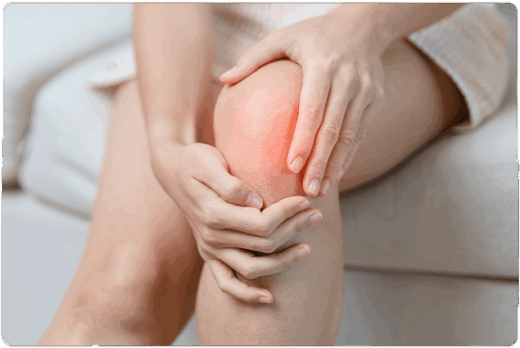For decades, knee replacement surgery was considered a last-resort solution for older adults, typically those in their late 60s or 70s whose joints had deteriorated from years of wear and tear. But that landscape is shifting. In recent years, orthopedic surgeons have witnessed a significant rise in younger patients, some in their 40s and even 30s choosing knee replacement to reclaim their mobility and quality of life.
This trend isn’t just anecdotal. Studies from institutions like the American Academy of Orthopaedic Surgeons and the UK’s National Joint Registry show a growing number of under-60 patients undergoing total knee arthroplasty (TKA). So, what’s driving this shift, and what does it mean for the future of orthopedic care?

Understanding Knee Replacement
Knee replacement, or knee arthroplasty, is a surgical procedure that replaces damaged cartilage and bone in the knee joint with artificial components typically made from metal alloys, high-grade plastics, or ceramics. This operation can significantly relieve pain, correct deformities, and restore function in knees affected by conditions like osteoarthritis, rheumatoid arthritis, or post-traumatic joint damage.
There are different types of knee replacement procedures, including:
- Total Knee Replacement (TKR) – Replacing the entire joint
- Partial (Unicompartmental) Knee Replacement – Replacing only the damaged portion of the knee
- Robotic-Assisted Knee Replacement – Enhancing precision with image-guided systems
The surgery is usually performed under spinal or general anesthesia, followed by a few days of hospital stay and several weeks of physiotherapy.
Why Are Younger People Now Choosing Knee Replacement?
1. Earlier Onset of Joint Damage
Knee osteoarthritis, once primarily associated with aging, is now affecting people earlier in life due to several factors:
- Sports injuries that accelerate joint degeneration
- Obesity, which increases joint loading
- High-impact jobs that wear down cartilage
- Genetic predisposition to arthritis
Younger patients who have exhausted conservative treatments like physical therapy, corticosteroid injections, or medications are finding themselves in chronic pain unable to work, exercise, or even sleep comfortably.
Rather than waiting until their 60s or 70s, they’re asking, “Why suffer now when I can have the surgery and get my life back?”
2. Improvements in Surgical Technology
In the past, concerns about the durability of implants made surgeons hesitant to operate on younger patients. Artificial joints were expected to last 10–15 years, meaning a young patient might need one or even two revision surgeries in their lifetime.
However, today’s prosthetics are far more durable, with lifespans extending 20–30 years in many cases. Advancements like minimally invasive techniques, computer-assisted navigation, and robotic surgery have also led to:
- Shorter recovery times
- Smaller incisions and less tissue damage
- More precise alignment
- Better long-term outcomes
These innovations have made knee replacement a more viable option for younger, active patients.
3. A Shift in Patient Expectations
Younger patients aren’t just living longer, they’re living more active lives. Today’s 40- and 50-year-olds want to hike, cycle, dance, and travel. They’re unwilling to accept joint pain as a normal part of aging.
This cultural shift has influenced surgical decision-making. Rather than delaying surgery until their mobility is severely limited, many younger patients now see knee replacement as a proactive step allowing them to maintain their lifestyle rather than retreat from it.
4. Improved Rehabilitation Protocols
Recovery after knee replacement has come a long way. Enhanced post-op care, including early mobilization, multimodal pain management, and targeted physiotherapy, enables many patients to resume normal activities within a few months.
This is particularly appealing to younger individuals who often need to return to work or manage families, making prolonged recovery time a major concern. In many cases, younger patients recover faster due to better overall health and muscle tone.
Are There Risks to Having Knee Replacement Early?
Like all surgeries, knee replacement carries certain risks: blood clots, infection, stiffness, or the possibility of needing a revision surgery later on. While the risks are generally low, younger patients do need to be aware that implants may wear out over time, especially with high-impact activities.
That said, studies show that revision rates are still relatively low in younger patients who follow post-op guidelines. Many modern implants and surgical techniques are designed with younger, more active users in mind, offering greater durability than ever before.
What Are the Alternatives and Why They’re Not Always Enough
Before deciding on knee replacement, most patients are encouraged to try conservative treatments, including:
- Physical therapy and strength training
- Weight loss (if applicable)
- Anti-inflammatory medications
- Corticosteroid or hyaluronic acid injections
- Knee braces or orthotics
However, these methods often provide only temporary relief, especially in moderate to severe cases. Younger patients who’ve tried everything only to be sidelined by pain during daily activities may find that surgery is not only reasonable but necessary.
What to Expect Before and After Surgery
For younger patients considering knee replacement, it’s essential to understand the full journey:
- Pre-operative planning includes X-rays, physical exams, and discussions with your surgeon about implant types.
- The operation typically takes 1–2 hours.
- Hospital stay usually lasts 1–3 days, with immediate initiation of gentle movement.
- Rehabilitation can take 6–12 weeks, depending on the patient’s goals and health status.
Most patients are walking without assistance within a month and returning to normal activities including low-impact sports within 3–6 months.
Age Shouldn’t Define Your Treatment
The idea that knee replacement is “only for the elderly” is rapidly becoming outdated. In an age of longer life expectancy, better implants, and rising patient expectations, more people in their 40s and 50s are realizing that waiting isn’t always the wisest option.
Knee replacement offers not just pain relief but a return to full, active living and for many younger patients, that’s a trade worth making.
If you’re considering knee replacement and wondering whether you’re “too young,” the real question is this: Are you ready to stop letting knee pain dictate your life?